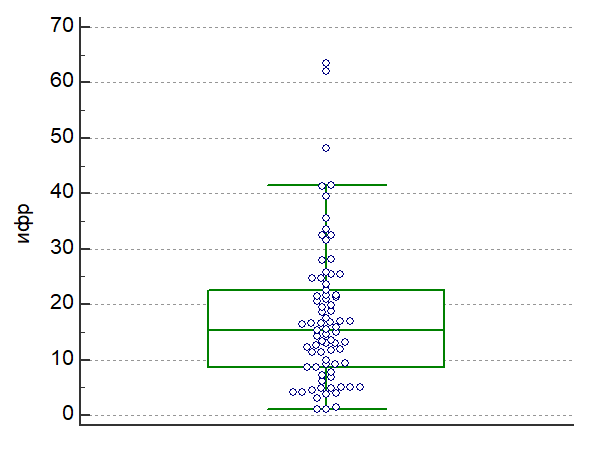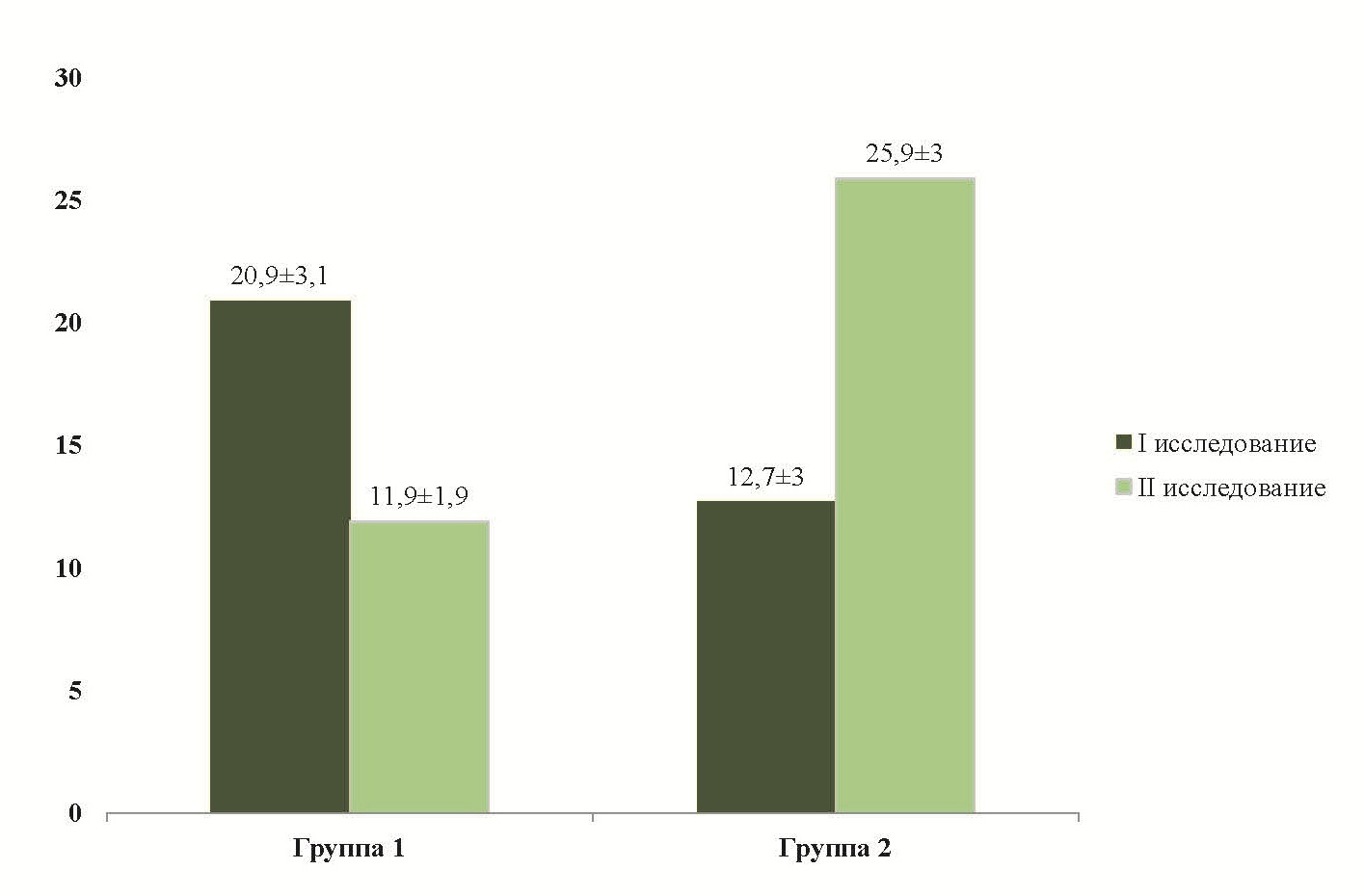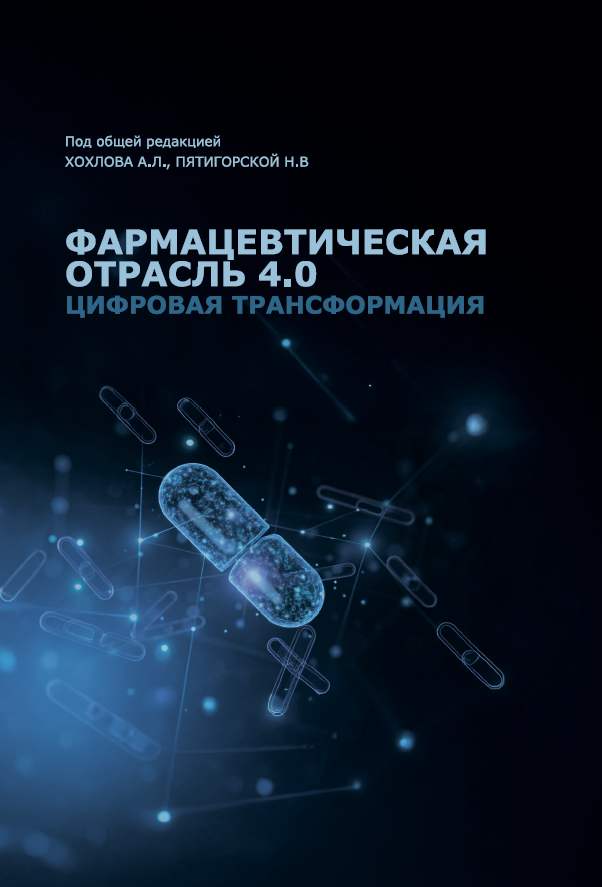Scroll to:
Early predictors of postnatal developmental disorders in prematurely born children
https://doi.org/10.37489/2949-1924-0099
EDN: VIABWB
Abstract
Relevance. Deviations in somatometric indicators in infancy lay the foundation for the development of chronic diseases in the future. The search for early prognostic indicators of physical development disorders in premature infants creates the prerequisites for their timely correction.
Objective. To determine the significance of changes in blood levels of IGF-1 in the neonatal period for predicting the physical development of premature infants.
Materials and methods. A prospective controlled study of 73 premature infants was conducted. Physical development indicators at 6 and 12 months of age were analyzed in two groups of children with different dynamics of insulin-like growth factor-1 (IGF-1) levels in the blood during the neonatal period.
Results. At 6 and 12 months of age, deviations in height or body weight from reference values were more common in children who had relatively low hormone levels in the early neonatal period, followed by an increase.
Conclusions. The dynamics of somatometric parameters in infants with increasing IGF-1 levels in the blood during the neonatal period indicate the possibility of using this biochemical indicator for early prediction of physical development deviations in premature infants.
For citations:
Dashichev K.V., Sitnikova E.P., Olandar N.V., Vinogradova T.V., Shitova A.S. Early predictors of postnatal developmental disorders in prematurely born children. Patient-Oriented Medicine and Pharmacy. 2025;3(3):28-33. (In Russ.) https://doi.org/10.37489/2949-1924-0099. EDN: VIABWB
Introduction
One of the pressing tasks in modern pediatrics is the study of physical development patterns in infants born prematurely. The importance of assessing anthropometric indicators is confirmed by their correlation with children's neuropsychic development [1]. Epidemiological studies have established the role of deviations in infant somatometric parameters as a predictive indicator of non-inflammatory diseases in subsequent age groups [2]. Consequently, the early identification of physical development characteristics creates prerequisites for the timely correction of metabolic processes and the prevention of severe pathological conditions [3]. A factor influencing children's growth is insulin-like growth factor-1 (IGF-1), which is involved in regulating protein and carbohydrate metabolism [4, 5]. Researchers note a significant range of numerical values for blood levels of this hormone in newborns [6]. This circumstance complicates the clinical interpretation of the results of a single measurement and hinders its use as a marker of metabolic processes and a prognostic criterion.
Objective
To identify the characteristics of somatometric parameters in prematurely born infants with different dynamics of blood IGF-1 levels in the neonatal period.
Materials
Seventy-three preterm children were examined in the neonatal period, as well as upon reaching the ages of six and twelve months. The study included children with a gestational age of 28-36 weeks and a birth weight of 1080-2540 grams. Children with developmental defects and those in severe condition in the neonatal period were excluded. The examined children were formula-fed from birth; less mature examined children received partial parenteral nutrition in the early neonatal period.
Methods
The level of insulin-like growth factor-1 in venous blood was determined in newborns during the early neonatal period and again in the late neonatal period with an interval of 10-14 days. The biochemical method used was enzyme-linked immunosorbent assay (ELISA) utilizing a microplate spectrophotometer. WHO growth charts with determination of corrected age were used to assess physical development indicators in infancy. Statistical processing of the numerical values was performed using the t-test, verified by the Mann-Whitney test. Group differences were considered significant at p < 0.05.
Results
In preterm infants during the neonatal period, the blood level of IGF-1 (summarized from the first and repeated tests) ranged from 1.0 to 60.3 µg/L. Centile curves were constructed to determine the distribution range of blood IGF-1 levels, including the 10th, 25th, 50th, 75th, and 90th percentiles of the hormone level (Fig. 1).

Fig. 1. Centile distribution of IGF-1 levels in the blood of premature newborns (numerical values are shown on the vertical axis)
IGF-1 levels characteristic of 50% of the examined preterm infants were located within the zone from the 25th to the 75th percentile. Levels below or above average, characteristic of 15% of preterm newborns, were found in the zones from the 25th to the 10th and from the 75th to the 90th percentiles. Low and high levels, located below the 10th and above the 90th percentiles respectively, were noted in 10% of children. The distribution boundaries of the hormone level were as follows: 25th – 8.71; 50th – 15.41; 75th – 22.62; 10th and 90th – 4.14 and 33.53 respectively; 0th and 100th – 1.0 and 63.56 µg/L respectively. The confidence interval for IGF-1 levels in the blood of preterm newborns was 8.7-22.6 µg/L.
Individual analysis of blood IGF-1 levels in preterm infants during the early and late neonatal periods revealed two opposing trends in shifts. Accordingly, the examined children were divided into two groups (Fig. 2).

Fig. 2. Blood levels of insulin-like growth factor-1 in premature newborns (M±m)
In children of the first group, a high hormone level was noted in the early neonatal period, which decreased upon the second measurement. In children of the second group, the initially relatively low hormone level increased upon repeated testing. The changes in IGF-1 levels over time and the differences between the groups in both measurements were significant. Obviously, the conditions of antenatal development had a certain influence on the initial hormone levels in both groups of children. In the obstetric history of mothers in the first group, localized acute forms or exacerbations of chronic inflammatory bronchopulmonary and urogenital diseases were noted with a frequency of 55%. In mothers of the second group, arterial hypo- or hypertension, anemia, and preeclampsia were noted with a frequency of 52%. The differences in the structure of pathological conditions within and between the groups were significant (p < 0.05). The gestational age and birth weight (M±m) in children of groups 1 and 2 were 31±0.5 and 32±0.6 weeks (p>0.05), and 1460±81 and 1682±98 g (p < 0.05), respectively. These data characterize children in group 1 as less mature.
At the chronological ages of 6 and 12 months, the somatometric parameters of the children examined in the neonatal period were assessed (Table 1).
Table 1. Dynamics of Somatometric Parameters, M±m
| Indicators | Group 1, Chronological Age | Group 2, Chronological Age | ||
|---|---|---|---|---|
| 6 mos. | 12 mos. | 6 mos. | 12 mos. | |
| Body weight, g | 6421±221 | 9096±228* | 6765±243 | 9244±238* |
| Body length, cm | 61±0.5 | 72±0.6* | 63±0.7 | 73±0.9* |
| W/L Ratio, g/cm | 233±10 | 268±12* | 252±10 | 245±18 |
| BMI, kg/m² | 17.5±0.3 | 16.3±0.2* | 17.1±0.3 | 16.4±0.3 |
| Frequency of Deviations, % | 22.2 | 12.6 | 13.0 | 42.1* |
| Note: * – significant age-related difference within groups. |
Various deviations of somatometric parameters from reference values were established in the examined infants; however, in group 1 the frequency of deviations decreased, while in the second group it increased three and a half times. Consequently, by the end of the first year, deviations in somatometric parameters were observed significantly more often in group 2, with body weight and length below average and low noted in 15.6%, and above average and high in 26.5% of children in this group.
Discussion
The results of the study in preterm newborns showed that blood levels of insulin-like growth factor-1 are characterized by two opposing trends, which, when determined by a single measurement, can result in a significant scatter of hormone level values, complicating or making its clinical interpretation impossible. The difference in blood hormone levels in children during the early neonatal period indicates features of metabolic processes due to the influence of various antenatal factors, the most significant of which is hypoxia, accompanied by protein deficiency in the fetal body [7, 8]. According to the obstetric history of the mothers, the highest frequency of adverse antenatal factors indicating a high risk of prolonged ("chronic") antenatal hypoxia occurred in the second group, which explains the low initial IGF-1 level [9]. The increase in the hormone level upon repeated testing indicates a "delayed stimulatory" response of the body's regulatory systems. Such dynamics of IGF-1 are a risk factor for obesity [10, 11]. Body weight and length "quantitatively" increased over the year in children of both groups, but in the second half of the year, changes in "qualitative" indicators acquired certain differences. In children of group 1, the rate of body weight increase significantly accelerated, resulting in comparable values of this parameter in children of both groups by the end of the observation period. At the same time, the body mass index in children of group 1 decreased, indicating a reduction in the proportion of adipose tissue in the body. No significant similar changes in somatometric indicators were recorded in children of group 2. Consequently, changes in the rate of weight gain were absent until the end of the first year. Another feature of physical development in children of this group is the preservation in the second half of the year of the proportion of adipose tissue formed at the beginning of the year. The result of these qualitative features in the dynamics of calculated anthropometric indicators was that by the end of the year, the frequency of deviations from reference values for body weight and length in group 2 children was three and a half times higher than in group 1 children.
Conclusion
The significant scatter in blood IGF-1 level values in preterm newborns is due to two patterns of initial levels and their dynamics; therefore, its adequate clinical interpretation is possible only considering changes upon repeated testing. In prematurely born children with low initial values and a subsequent increase in hormone levels during the neonatal period, this pattern should be assessed as a prognostic marker for deviations in physical development.
References
1. Belousova TV, Andrushina IV. Intrauterine growth retardation and its impact on children's health in later life. the possibility of nutritional support. Voprosy` sovremennoj pediatrii=Current Pediatric. 2015;14(1):23-30. (In Russ.). DOI: 10.15690/vsp.v14i1.1259
2. Stettler N, Iotova V. Early growth patterns and long-term obesity risk. Curr Opin Clin Nutr Metab Care. 2010;13(3):294-9. doi: 10.1097/MCO.0b013e328337d7b9
3. Netrebenko OK, Scheplyagina LA. Nutrition in the early stages of life. Causes of violations and consequences. Nestle Nutrition Institute, 2015. (In Russ.)
4. Razin VA, Nizamova LT, Gnoevykh VV et al. Insulin-like growth factor 1: cardiovascular morbidity prognosis. Ul'yanovskiy mediko-biologicheskiy zhurnal = Ulyanovsk Medico-biological Journal. 2021;4:6–17 (In Russ.) DOI: 10.34014/2227-1848-2021-4-6-17.
5. Jensen-Cody SO, Potthoff MJ. Hepatokines and metabolism: Deciphering communication from the liver. Mol Metab. 2021 Feb;44:101138. doi: 10.1016/j.molmet.2020.101138.
6. Hellstrom A, Ley D, Hansen-Pupp I, et al. Insulin-like growth factor 1 has multisystem effects on fetal and preterm infant development. Acta Pædiatrica. 2016;105(6):576-86. DOI: 10.1111/apa.13350
7. Shabalov N.P. Neonatology, vol. 1. M.: GEOTAR-Media, 2020 (In Russ.)
8. Yakovenko DV, Sazonova EN, Simankova AA et al. The effect of dihydroquercetin on proliferative and anabolic processes in various cell populations of newborn white rats subjected to antenatal hypoxia. E`ksperimental`naya i klinicheskaya farmakologiya = Experimental and Clinical Pharmacology. 2019; 82(4):41-44. (In Russ.) doi: 10.30906/0869-2092-2019-82-4-41-44.
9. Custodio RJ, do Carmo Custodio VI, Scrideli CA, Sader Milani SL, Cervi MC, Cupo P, Martinelli CE Jr. Impact of hypoxia on IGF-I, IGF-II, IGFBP-3, ALS and IGFBP-1 regulation and on IGF1R gene expression in children. Growth Horm IGF Res. 2012 Oct;22(5):186-91. doi: 10.1016/j.ghir.2012.07.001.
10. Netrebenko OK, Ukraintsev SE, Melnikova IY. Obesity in Children: New Prevention Concepts and Approaches. Literature Review. Voprosy` sovremennoi pediatrii = Current Pediatrics. 2017; 16 (5): 399–405. (In Russ.) doi: 10.15690/vsp.v16i5.1804
11. Calcaterra V, Verduci E, Magenes VC et al. The Role of Pediatric Nutrition as a Modifiable Risk Factor for Precocious Puberty. Life. 2021; 11(12):1353. DOI: 10.3390/life11121353.
About the Authors
K. V. DashichevRussian Federation
Kirill V. Dashichev, Cand. Sci. (Med.), Associate Professor
Department of Pediatrics № 2
Yaroslavl
Competing Interests:
Authors declare no conflict of interest requiring disclosure in this article
E. P. Sitnikova
Russian Federation
Elena P. Sitnikova, Dr. Sci. (Med.), Professor, Head of the Department
Department of Pediatrics № 2
Yaroslavl
Competing Interests:
Authors declare no conflict of interest requiring disclosure in this article
N. V. Olandar
Russian Federation
Nataliya V. Olandar, Cand. Sci. (Med.), Associate Professor
Department of Pediatrics № 2
Yaroslavl
Competing Interests:
Authors declare no conflict of interest requiring disclosure in this article
T. V. Vinogradova
Russian Federation
Tatiana V. Vinogradova, Assistant lecturer
Department of Pediatrics № 2
Yaroslavl
Competing Interests:
Authors declare no conflict of interest requiring disclosure in this article
A. S. Shitova
Russian Federation
Anna S. Shitova, Assistant lecturer
Department of Pediatrics № 2
Yaroslavl
Competing Interests:
Authors declare no conflict of interest requiring disclosure in this article
Review
For citations:
Dashichev K.V., Sitnikova E.P., Olandar N.V., Vinogradova T.V., Shitova A.S. Early predictors of postnatal developmental disorders in prematurely born children. Patient-Oriented Medicine and Pharmacy. 2025;3(3):28-33. (In Russ.) https://doi.org/10.37489/2949-1924-0099. EDN: VIABWB

































.png)
